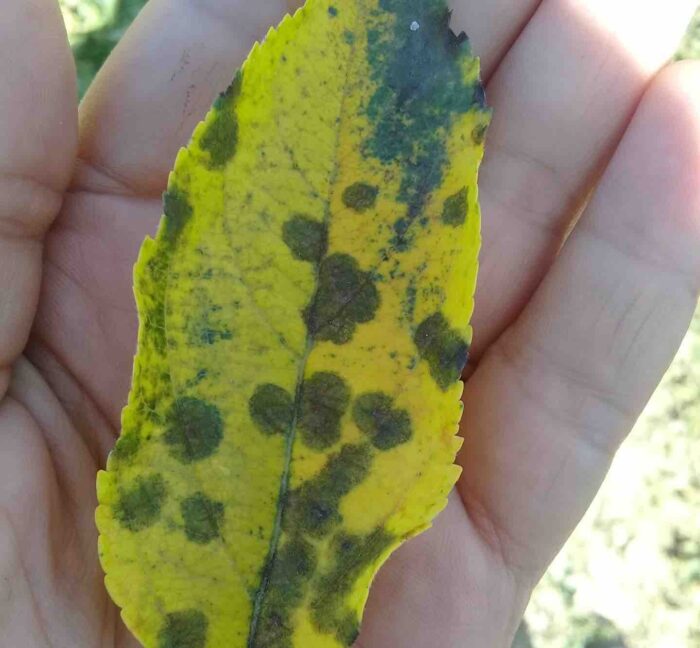Apple Scab
Apples
Apple scab is a fungal disease of great agricultural importance and worldwide dispersion. Apple scab remains dormant on the plant debris of previous seasons. Infestations can occur anytime between the initial phase of fruit formation to the time when fruits are picked. A apple scab outbreak is triggered with wetting events and disperses and reproduces during through splashing water. Green to black circular spots with a dusty-like texture appear on leaves and fruits. If not properly treated, crops exhibit decreased photosynthesis, fruit tissue damage, and fruit deformation.
Apple scabs remains dormant on the plant debris of previous seasons that are found on the ground. Therefore, simple sanitation measures are important for lowering the risk of an outbreak.
Well-timed preventive spraying applications are important, especially in apple varieties in which bud breaking begins in a rainy period.
It is common to have a minimum of two preventive spraying applications from bud break until weather conditions become stable. It is suggested that additional treatments should be applied every 8-10 days in varieties that the buds break in rainy periods.
The following fungicides are still in use in one or more parts of the world: tebuconazole, trifloxystrobin, cyproconazole, and azoxystrobin (applied only for when (and if) apple scab symptoms are clearly present), and captan, dithianon, bromuconazole, mancozeb, and sifenazolenoco.
Do not use products based on the same active ingredient in consecutive treatments, as this may induce fungi resistance to that specific ingredient used.
*Names marked in red are considered to be highly poisonous to beneficial insects.
*Names marked in green are considered to be organic and IPM (integrated pest management) compatible.
Image Gallery

